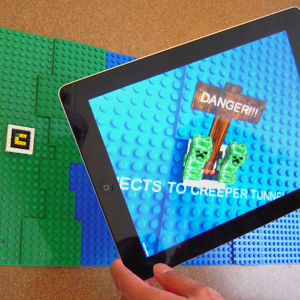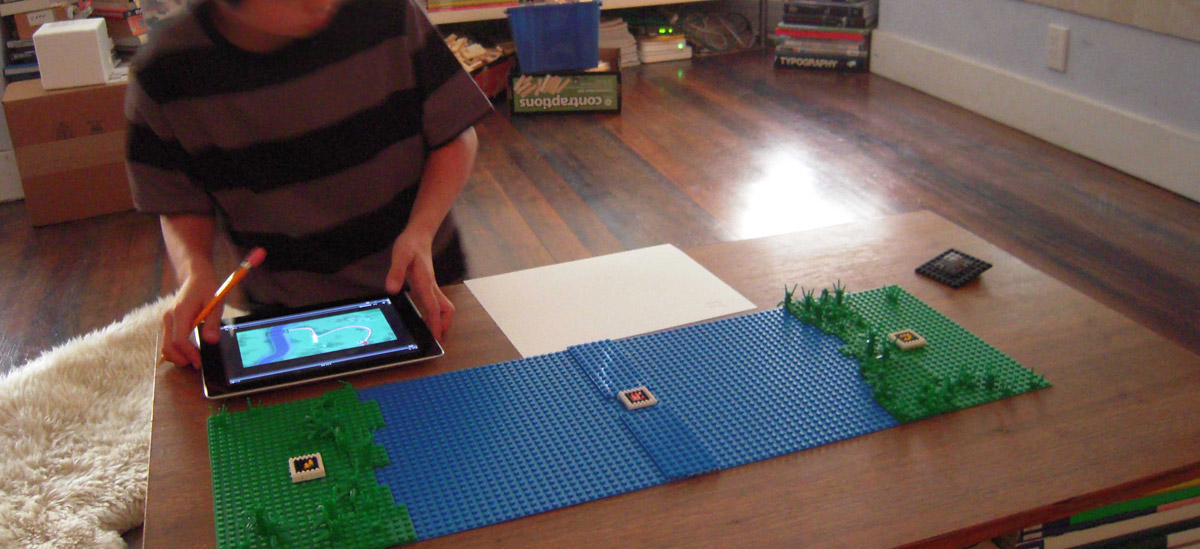Saving Arcadia was built as a working game prototype designed to research kids’ attitudes towards physical building games enhanced with new technologies like Augmented Reality and immediate feedback mechanisms.
My mission was to design a learning-rich building experience that would captivate kids of ages 8-12 and invite them to play. All the interviews and field research was leading me to believe that kids today are more inclined to sustain interest in digital games rather than the toys I used to play with. So, the question was, could I make physical and tangible gameplay as enriched as digital games?
Would the digital generation I was dealing with, embrace a classic game of block play, if it had elements that made digital games exciting embedded into it?
By combining new technologies with our childhood favorite play activities (like the Legos); we can design “toys to create with” for today’s generation.
When creating Saving Arcadia, I used Legos and borrowed parts of the game mechanics from Minecraft (a digital building game). I wanted to explore how digital elements like creating a narrative, setting goals & introducing restrictions and challenges would translate to a hands-on play activity.
FIELD RESEARCH
Each player is the hero with great building abilities, chosen to save a city by building a bridge for the townspeople to escape before the creepers arrived. The bridge needs to be strong and all the Lego pieces are color blocked to represent certain materials. The strength and dimensions of their bridge would determine their ranking at the end of the activity.
The game began with an audio invitation: “Welcome to Arcadia. Your mission is to build a bridge to save the Arcadians from the creepers heading to the city.”
UNLOCKING THE NARRATIVE WITH AUGMENTED REALITY
All the interaction is brought into the physical building space, by giving the participants a base-plate that matched the terrain of the adventure. And it is embedded with 3-codes (as I called them) to identify certain points in the map. I programmed an interactive application where the player uses an iPad and augmented reality technology to decipher those codes. Each code reveals a part of the mission and the challenge ahead.
KEEPING THE PLAYER ENGAGED
Using pre-recorded video messages and wifi connection, the iPad was used as a medium to deliver progress reports about the creepers journey and time remaining, in 5-10 minute intervals during the game. And pre-recorded audio tracks were played to give feedback about the status of the player’s bridge. Because I was going to be present in all the play activities, I altered my voice to detach myself from the game experience, which received mixed reviews.
In the prototype, I used audio as well as visual output. I had learned that kids tend to skip reading directions when they are playing and respond more favorably to audio messages.
FEEDBACK & FURTHER RESEARCH
However, there were many insights that led me to an improved version of the game. Kids wanted more feedback, more choices of adventures that made up a cohesive story, more interaction with the backstory and more relevance between the physical elements and digital story world. This led to basic design principles and a final vision: Builder Quest.



